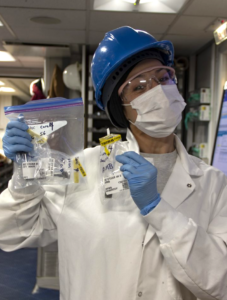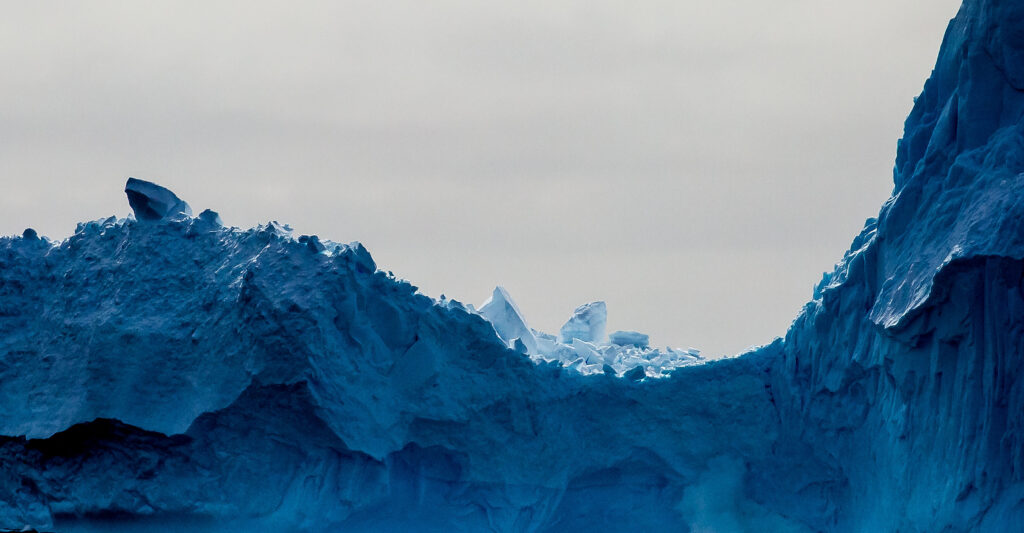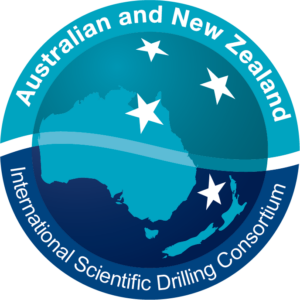Ancient Genes and Climate Futures: Lucinda Duxbury on Expedition 403
Eastern Fram Strait Paleo-Archive
 Lucinda Duxbury – ANZIC expeditioner on the final scheduled expedition of the JOIDES Resolution – grins widely when asked about the upcoming voyage. Her grin exudes a mix of excitement and apprehension.
Lucinda Duxbury – ANZIC expeditioner on the final scheduled expedition of the JOIDES Resolution – grins widely when asked about the upcoming voyage. Her grin exudes a mix of excitement and apprehension.
“I’m nervous for all the same reasons that I’m excited,” she explains, “because of the importance of the questions we’re addressing, for having this amazing opportunity, the huge privilege it is to be part of this international program.”
IODP Expedition 403 will drill into the details of warmer times in the Earth’s past to understand the intricate interplay between changes in climate, ocean dynamics, sea ice and marine ecosystems. What scientists on board – like Lucinda – discover will help ground-truth climate models and help us all prepare for the future.
While the Expedition takes place deep within the Arctic circle, and studies ancient sediments, it may illuminate the future of the West Antarctic ice sheet on the opposite side of the Earth. In a warming world, the response of this critical ice sheet – containing enough water to raise global sea level by five metres – is a major uncertainty in predicting future global sea level rise.
Lucinda is in the first year of her PhD at the University of Tasmania, studying at the intersection of geochemistry, genetics and climate science, and perfectly positioned to tackle the expedition’s objectives.
“I’ll be attempting to retrieve ancient DNA and RNA from sediments buried deep under the Fram Strait,” she says. “It’s a very modern method to look back into the past.”

The Fram Strait – lying between Greenland and Svalbard – is the only deep-water passage between the North Atlantic and Arctic Ocean. Water flowing to the Arctic here brings with it heat and salt, influencing the formation and melting of ice sheets and sea ice. The thick layers of ocean sediments deposited by these currents over millions of years are the target of coring for the JR team.
“The Expedition will be drilling down 700m below the sea floor to extract core samples – first passing through about 1.5km of water. That will mean we can look at over 7 million years of records.”
“I’ll be looking to collect samples from the cores and anaylse them for ancient genetic material.”
By studying the ancient DNA and RNA (aDNA and aRNA) that she is able to detect, Lucinda intends to identify the organisms that once lived on the sea floor and ocean above. From that, she can reconstruct past ecosystems and link changes to the marine food web with rapid ice melt in the past.
“I’m particularly interested in the marine microorganisms at the base of the marine ecosystem, which we expect will make up most of the ancient signal we recover. They might be small on an individual level but collectively they play huge roles in the cycling of nutrients through the Earth system. For example, they regulate carbon cycles, thereby entering reciprocal feedback loops with Earth’s climate”
But working with ancient genes isn’t easy.

“You can’t decide to analyse aDNA retrospectively. You have to plan it carefully from the beginning,” Lucinda explains. “I’ll be wearing full PPE to protect the samples from contamination by modern DNA. The sampling must take place in carefully controlled conditions. And that can be hard to do on a boat!”
There’s also a chance that no DNA will have survived its long wait at the bottom of the ocean.
“We need to know more about what sediment properties are conducive to aDNA and aRNA preservation,” she says. “It’s where geochemistry and genetics meet.”
The raft of analyses and measurements that are routinely made on all cores extracted on the JR will be of great importance. They may help Lucinda link sediment chemistry with DNA survival.
As the only dedicated microbiologist on board, hoping to collect 800 samples, no wonder Lucinda is nervous in her excitement.
The scientists aboard Expedition 403 are especially interested in reconstructing the history of the now-melted Svalbard-Barents Sea Ice Sheet. It’s the best modern analogue to the West Antarctic Ice Sheet – which is a major uncertainty in predicting future global sea level rise. Understanding how it responded to warming climates in the past may be crucial to pinning down the most likely future scenarios. And better predicting sea level changes is something to get excited – and nervous – about.

